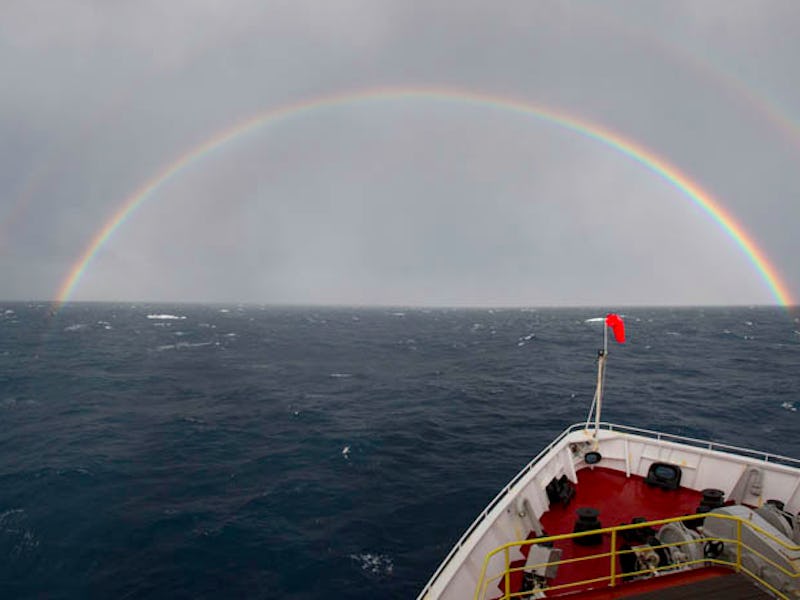Expedition to Submerged 'Lost Continent' Zealandia a 'Success'
Humans made contact with the mysterious eighth continent for the first time.

The first-ever expedition to Zealandia, the mysterious, submerged “eighth continent,” has officially come a close. After docking their ship, the JOIDES Resolution, in Hobart, Australia, the international team of scientists behind the study reported on Wednesday that the nine-week-long voyage into the far reaches of the Pacific Ocean uncovered hundreds of fossils that serve as clues to what life was like millions of years ago in this unexplored region.
“Zealandia, a sunken continent long lost beneath the ocean, is giving up its 60 million-year-old secrets through scientific ocean drilling,” Jamie Allan, the program director of the U.S. National Science Foundation’s Division of Ocean Sciences, said in a statement.
“This expedition offered insights into Earth’s history, ranging from mountain-building in New Zealand to the shifting movements of Earth’s tectonic plates to changes in ocean circulation and global climate.”
Drilling operations were controlled from large rigs, as shown here.
Zealandia, which was first introduced as the world’s eighth continent in February, is quite unlike the other continents; while it’s believed to span 5 million square kilometers, 94 percent of it is submerged. The parts of Zealandia that can be seen were previously thought to be scattered islands within the territories of New Zealand and New Caledonia.
The team’s mission was to extensively survey and sample the region: During the voyage, the researchers, affiliated with the International Ocean Discovery Program, drilled into the seabed at six sites and collected 8,202 feet of sediment cores. These layers are expected to reveal how the geography, volcanism, and climate of Zealandia has changed over time.
The red dots were the primary expedition sites.
In the process, the scientists uncovered more than 8,000 biological specimens and several hundred fossil species. Early analysis of these specimens, which include microscopic shells and the spores and pollen of land plants, indicates that Zealandia wasn’t always underwater.
Before volcanic activity buckled the seabed of Zealandia between 40 to 50 million years ago, this region was likely the pathway that allowed different animals and plants to disperse around the South Pacific, the scientists report.
September sunrise aboard the IODP Expedition, en route to Zealandia from Townsville, Australia.
The next step in Zealandia research is to study the sediment cores to better understand how Earth’s tectonic plates move. And since the cores carry a record of the lost continent’s history — including the effects of long-term changes in weather patterns — the scientists also want the data they collect from them to create a computer model that can predict future changes in climate.
Zealandia is assumed to have separated from Australia and Antartica about 80 million years ago, but besides that, and what we learned from this most recent expedition, it’s still not clear what happened to it in the millions of years leading to its submergence. To uncover more about the mystery continent, the JOIDES Resolution will return to the region next year to explore further.
If you liked this article, check out this video of an underwater drone that explores ocean life.